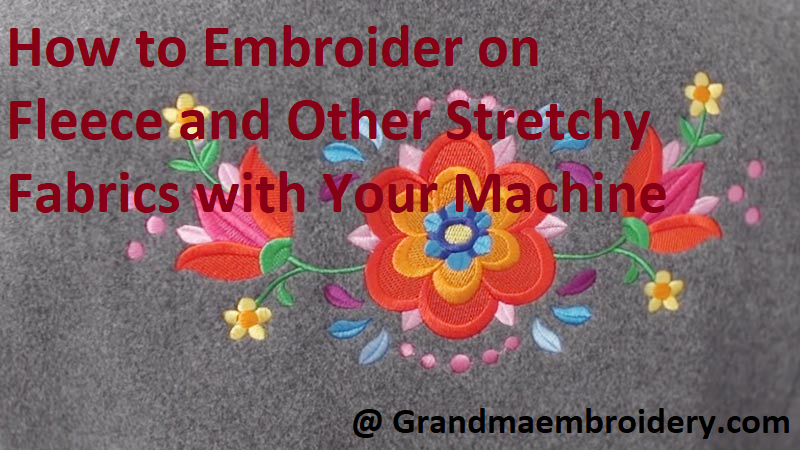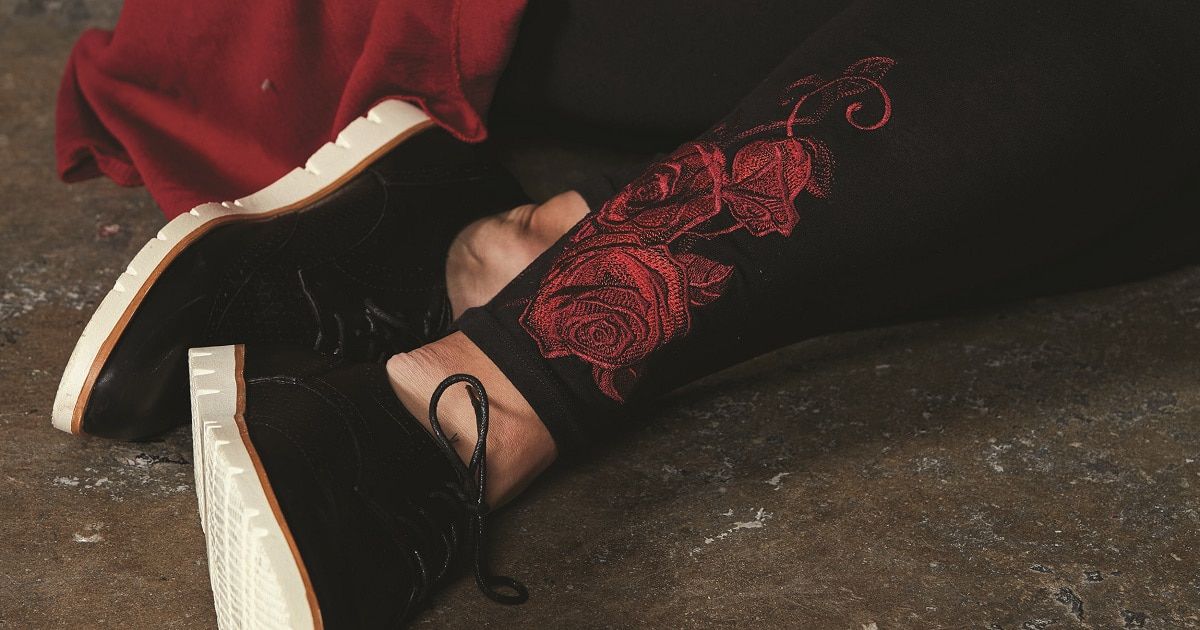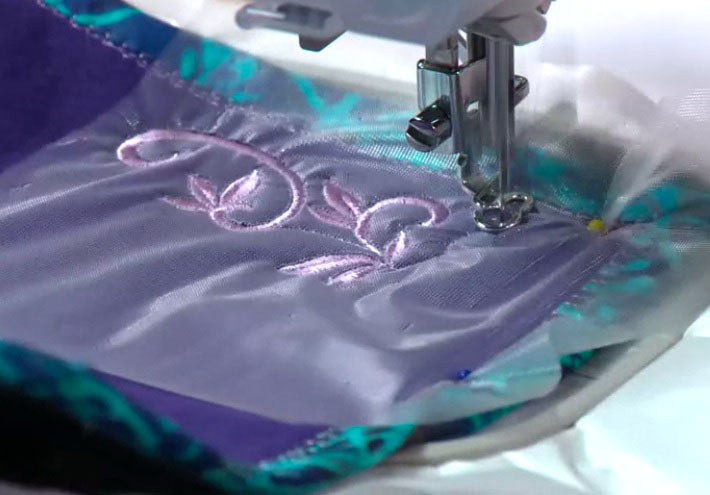Introduction
Embroidery is the art of decorating fabric or other materials with designs using thread, yarn, or other materials. Fleece fabrics are synthetic fabrics made from polyester fibers that are often used for warm clothing and blankets.
Knowing how to embroider on stretchy fabrics is important because these types of fabrics, such as spandex or jersey knit, have a tendency to stretch and warp during the embroidery process. This can lead to designs that are distorted or uneven. Proper techniques must be used to ensure that the design is both accurate and visually pleasing.

When embroidering on stretchy fabrics with a machine, it is important to use the correct needle and thread, as well as the proper stabilizer to prevent the fabric from stretching or puckering. Hooping the fabric tightly and using a slow and steady machine speed can also help achieve better results.
Overall, machine embroidery on stretchy fabrics requires patience and attention to detail, but with the right techniques and tools, beautiful designs can be achieved on even the most challenging materials.
Choosing the Right Tools and Materials
To achieve successful machine embroidery on stretchy fabrics, it’s important to choose the right tools and materials.
- Selection of appropriate embroidery machine: When embroidering on stretchy fabrics, it’s important to choose a machine that has a good range of adjustable settings, such as needle tension, stitch length, and width. A machine with a larger throat space can also be beneficial for working with larger pieces of fabric.
- Choosing the right embroidery thread: Polyester thread is often recommended for embroidering on stretchy fabrics because it has a bit of give and can withstand the stretching and pulling that can occur during the embroidery process. It’s also important to choose a thread that matches the color of the fabric and complements the design.
- Proper choice of stabilizer and hooping: Using a stabilizer is essential when embroidering on stretchy fabrics as it helps prevent the fabric from stretching or puckering during the embroidery process. Tear-away stabilizers are commonly used for stretchy fabrics as they can be easily removed after embroidery. It’s important to choose a stabilizer that matches the weight and stretchiness of the fabric.
Hooping the fabric tightly is also important to ensure that the fabric stays in place during embroidery. Use a hoop that is slightly larger than the design to provide enough room for the needle to move around without stretching the fabric.

By choosing the right embroidery machine, thread, stabilizer, and hooping technique, you can help ensure that your machine embroidery on stretchy fabrics is successful and produces beautiful results.
III. Preparing the Fabric for Embroidery
Preparing the fabric properly before starting the embroidery process is crucial for achieving high-quality results. Here are some tips for preparing fleece fabric:
- Pre-washing and ironing: Before embroidering on fleece fabric, it’s important to pre-wash and iron the fabric to remove any dirt, debris, or sizing that may be present. This will also help prevent the fabric from shrinking or distorting after embroidery. Use a gentle detergent and cold water to wash the fabric, and avoid using fabric softeners as they can affect the fabric’s absorbency. After washing, iron the fabric on the appropriate heat setting to remove any wrinkles or creases.
- Trimming and cutting: Before hooping the fabric, trim any loose threads or fibers that may be present on the surface of the fabric. This will help prevent the embroidery machine from getting caught on any stray threads and ensure that the design is clean and precise. Then, cut the fabric to the appropriate size for your embroidery design, leaving some extra margin around the edges to allow for hooping.
By properly preparing the fleece fabric before embroidery, you can help ensure that the fabric is clean, flat, and free of any debris or imperfections that could affect the embroidery process. This will help ensure that your embroidery design is beautiful and long-lasting.
Embroidery Techniques for Stretchy Fabrics
When it comes to embroidery on stretchy fabrics such as fleece, there are a few techniques and settings that can help ensure a successful outcome. Here are some tips to keep in mind:
- Use a stabilizer: Stretchy fabrics tend to stretch and pucker during the embroidery process, so using a stabilizer can help keep the fabric taut and prevent distortion. Choose a stabilizer that is appropriate for the weight and stretchiness of the fabric.
- Use the right needle: A ballpoint needle is best for stretchy fabrics, as it has a rounded tip that can slide between the fibers of the fabric without breaking them.
- Use the right thread: Choose a high-quality embroidery thread that is designed for use on stretchy fabrics. Polyester and rayon threads are good options, as they have some stretch and won’t break easily.
- Use the right design: Not all embroidery designs are suitable for stretchy fabrics. Avoid designs with lots of small details or dense stitching, as these can cause the fabric to pucker or distort. Instead, choose designs with larger, open areas and lighter stitching.
- Adjust the tension: Experiment with the tension settings on your embroidery machine to find the best balance between tension and stretch. This will vary depending on the fabric and stabilizer you are using, so be prepared to make adjustments as needed.
- Slow down the machine: Slowing down the embroidery machine can help prevent puckering and distortion, as it gives the fabric and stabilizer more time to adjust to the stitching.
By following these tips and adjusting the settings on your embroidery machine as needed, you can achieve beautiful embroidery designs on stretchy fabrics like fleece without puckering or distortion.
Finishing and Caring for Embroidered Fleece Fabric
After completing an embroidery project on fleece fabric, it’s important to properly finish and care for the fabric to ensure it lasts for years to come. Here are some tips for finishing and caring for embroidered fleece:
- Removing stabilizer: Once the embroidery is complete, carefully remove any excess stabilizer using a pair of scissors or a stabilizer remover tool. Be sure to remove all the stabilizer to avoid any residue that could cause itching or irritation.
- Washing and drying embroidered fleece: Before washing your embroidered fleece fabric, turn it inside out to protect the embroidery. Use cold water and a mild detergent to wash the fabric, and avoid using bleach or fabric softener. Tumble dry on low heat or hang to air dry.
- Storing embroidered stretchy fabrics: When storing embroidered stretchy fabrics, fold them neatly and avoid hanging them to prevent stretching or distortion. Store them in a cool, dry place away from direct sunlight to prevent fading.

Overall, embroidered fleece fabric can be cared for similarly to other fleece fabrics. Just be sure to handle the fabric gently and avoid using harsh chemicals or heat when washing and drying. By following these tips, you can ensure that your embroidered fleece fabric stays in great condition for years to come.
Conclusion
In conclusion, embroidery on fleece fabric can be a fun and rewarding project, but it requires some special techniques and care. Here’s a recap of the key points to keep in mind:
- Use a stabilizer to prevent puckering and distortion.
- Use a ballpoint needle and high-quality embroidery thread.
- Choose embroidery designs with larger, open areas and lighter stitching.
- Adjust tension and speed settings on your embroidery machine.
- Carefully remove excess stabilizer after embroidery.
- Wash and dry embroidered fleece fabric gently.
- Store embroidered stretchy fabrics folded neatly in a cool, dry place.
Remember, with any new skill, practice makes perfect. Don’t be afraid to experiment with different techniques and settings to find what works best for you and your embroidery projects. With a little patience and practice, you can create beautiful embroidered designs on fleece fabric that will be treasured for years to come.
So, go ahead and give it a try! You may surprise yourself with what you can create. Happy stitching!
See Also-
- Best Janome Embroidery Machine 2023
- Best Brother Embroidery Machine 2023
- Best Embroidery Machine For Hoodies 2023
- Best Embroidery Machine 2023
- Best Embroidery Machine Under $1000 In 2023
